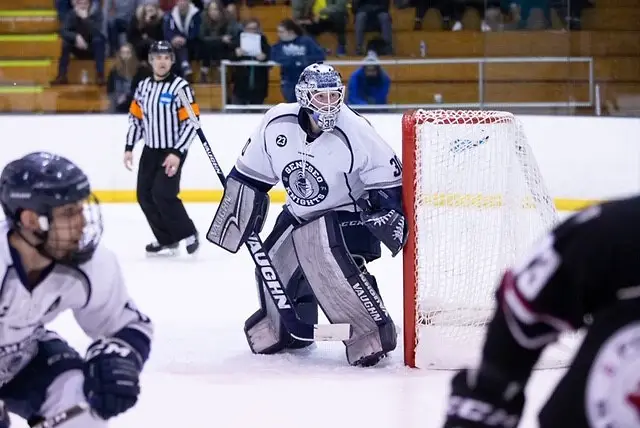
Adrian coach Adam Krug said it may never be possible to know if implementing the PairWise system to select the NCAA tournament field is the best thing to do for the sport at the Division III level.
“One year it may appear so; other years it won’t,” Krug said.
If there is one thing PairWise does to with certainty, it allows fans and coaches to go to one place and see where their team is ranked who they need to catch to be in a position to earn an at-large bid.
The rankings are up on USCHO.com, just like the Division I rankings are. Rankings snapshots will also be posted on NCAA.com on a weekly basis during the three weeks leading up to the selection day.
“This should drive more interest for fans to follow closer, draw more views on live streams, and add a little more fun down the stretch,” Krug said.
PairWise is a two-year program and is decidedly different than the previous selection process, which involved several selection criteria similar to the ones used by other D-III championships when it comes to selecting the tournament field.
The PairWise will be used for the men’s and women’s tournament selection process. Division I men’s and women’s hockey have used it for several years to determine their tournament fields. The NCAA used the past two years to study and explore the possibility of implementing PairWise at the D-III level.
Jared Phillips and Crystal Lanning are the chairs of the men’s and women’s ice hockey committees, respectively. Phillips also serves as the assistant athletic director at Gustavus Adolphus. Lanning is the director of athletics at Wisconsin-River Falls. Together, they discussed the reasoning for bringing PairWise into D-III hockey.
Philips and Lanning said it allows for transparency and that calculations are pretty straightforward, with the system taking into account RPI, strength of schedule, quality win bonus, head-to-head competition, and results versus common opponents.
Wisconsin-Stevens Point coach Tyler Krueger said that because the system is clear-cut, it makes sense to follow the lead of D-I hockey.
“The past four or five years there have been major arguments/discrepancies in the at-large teams that were selected because part of the selection process was subjective,” Krueger said. “Being on the western regional advisory committee last year gave me insight into how the selection process worked. In the West, things were pretty clear-cut based on the numbers, but I can see how issues can arise.”
Oswego coach Ed Gosek has served on past selection committees as well and said he’s always been a proponent of PairWise.
“Taking the human factor out of the process was the only way to make it transparent and to eliminate the possibility or perception of any human bias,” Gosek said. “The only human factor will be seeding and placement based on our tournament rules, such as mileage and distance.”
Phillips and Lanning both said that coaches were surveyed about PairWise at last year’s American Hockey Coaches Association convention, and more than 94 percent of those coaches voted in favor of using PairWise.
The commissioners from each of the conferences in D-III also supported the move as well.
Krug said there is good and bad to PairWise, and one thing he is interested in seeing is the reaction to the field being seeded and a two seed ends up playing a four seed in the first round because of travel guidelines.
“The good is that the numbers are the numbers and teams that deserve to be in based off of the numbers are in,” Krug said. “The bad is that a team that may pass the eye test, and is visibly better than others, will get left out of the tournament. Do we want the best tournament based on skill, or do we want to leave it to the numbers? In 2008 and 2009, I wanted the numbers. In 2019, I’m torn.”
Phillips and Lanning point out that everything will work itself out even though there isn’t as much cross-region competition in D-III hockey. Phillips said he and Lanning are confident the PairWise system will identify and rank the proper teams for the tournament.
Krueger believes PairWise will have an impact on how teams schedule games going forward.
For the time being, it’s wait and see. Only time will tell how the first year of PairWise goes at the D-III level. Both Phillips and Lanning said an evaluation will take place over the summer, and adjustments will be made if needed. The hope is that PairWise will be adopted permanently after the two-year trial period.
Gosek is excited about the use of PairWise and said the excitement generated by it is great for the sport.
“Speaking with our players both past and present, it is awesome that you can follow along and watch and understand exactly what you have to do to get in,” Gosek said. “Do you have any chance if you don’t win your (conference) playoff, or is that the only way you get in? I think it’s awesome for the players and fans alike to be able to track and follow along.”


